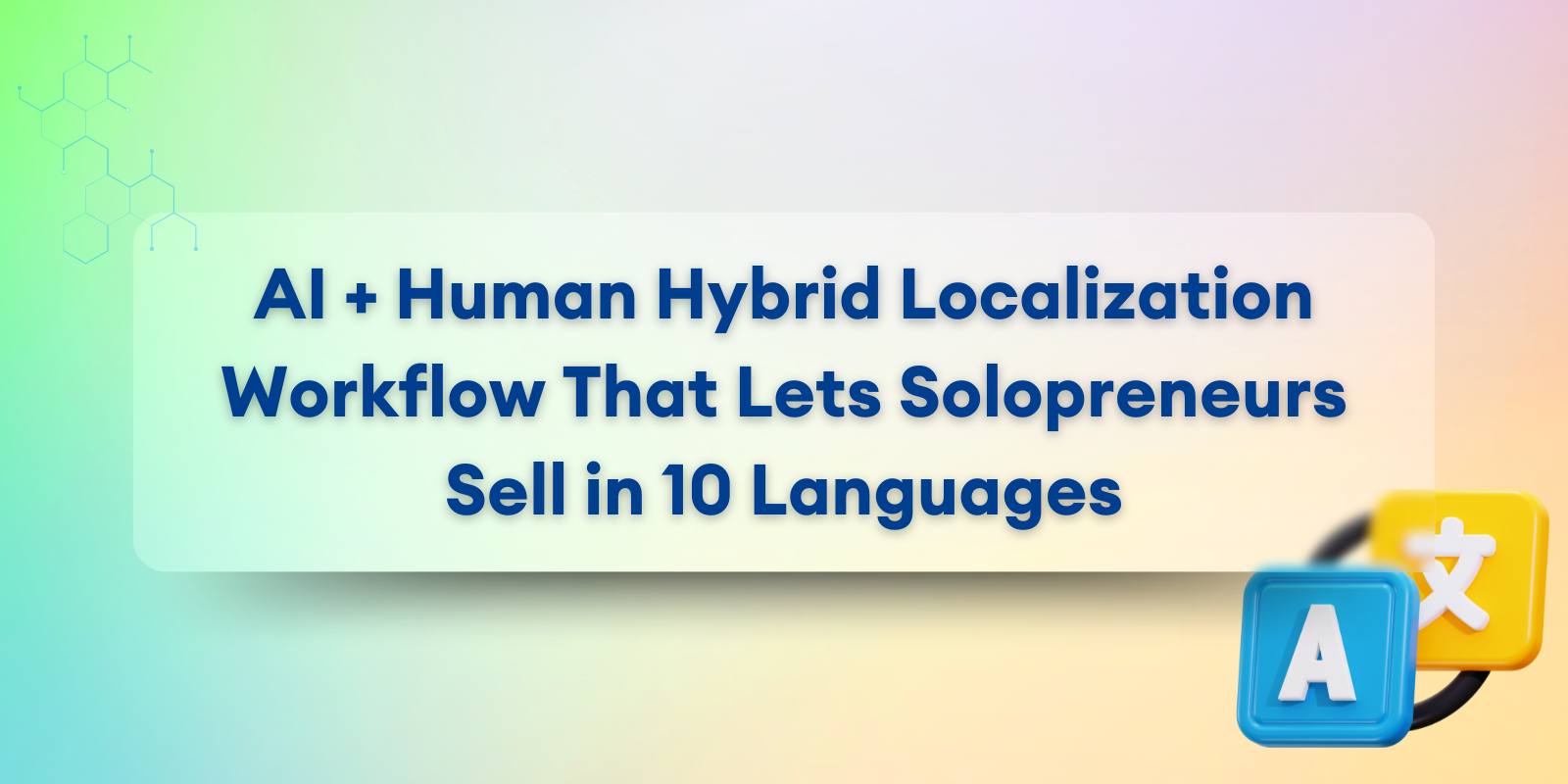
It starts with one customer email: “Do you ship to Spain?”
Then a DM in broken English.
Then a quiet idea: What if I just…translated the site?
You already know international expansion is possible. What’s confusing is how to do it without hiring translators, wrecking your site architecture, or losing the tone of voice you worked so hard to shape.
What you need isn’t “translate everything.”
You need a smart filter.
One that helps you scale selectively.
One that uses AI for the heavy lifting, and humans for the high-stakes lines.
One that doesn’t punish you for being a solo operator.
This isn’t about bloated enterprise localization.
This is about doing more with what you already have.
In this article, I’ll show you how to:
- Use AI to break into new markets fast.
- Know exactly what should (and shouldn’t) get a human pass.
- Set up a simple stack that doesn’t require a project manager.
Let’s start with what not to automate.
What to Automate vs What Needs a Human
Most founders default to two extremes:
1. Auto-translate everything with AI. Cheap, fast, but full of tone mismatches and awkward phrasing.
2. Hire human translators for every word. High quality, yes, but expensive, time-consuming, and frankly overkill for most early-stage indie businesses.
Neither scales well if you're small and scrappy.
The smarter move?
Segment your content by stakes.
- Low-stakes content: Blog posts, category pages, product specs.
→ Let AI tools like DeepL or Lokalise handle these. - High-stakes content: Homepage copy, checkout screens, ad headlines.
→ Route these through professional translation services that specialize in preserving intent and nuance.
You’re not aiming for “perfect everywhere.”
You’re aiming for consistently good in the moments that matter.
The Hybrid Workflow: What It Looks Like in Real Life
You don’t need a localization team.
You need a repeatable flow you can run on your own (or with a VA), even on tight timelines.
Here’s what that actually looks like in practice:
Step 1: Choose Your Languages (And Don’t Overdo It)
Going global doesn’t mean going everywhere.
Start with:
- Countries where you already have traffic or sales trickling in.
- Regions where you know demand exists but content is a barrier.
- Languages you (or someone on your extended team) can sanity-check.
Pro tip: If your brand has a distinct tone, choose languages where you can find culturally aligned translators or regional reviewers. Humor, especially, doesn't always translate cleanly.
Step 2: Feed AI the Right Inputs
AI tools are only as good as what you feed them.
Write in clear, plain English. Strip jargon. Avoid idioms.
- Use translation-friendly formats (e.g. Google Sheets with labeled fields).
- Give short contextual notes for key sections (like CTAs or product names).
- Review the AI output yourself before sending anything live.
This keeps AI from introducing weirdness you’ll have to clean up later.
Step 3: Flag High-Stakes Copy for Human Review
This is where your translation services partners come in.
- Homepage headline? Human.
- Checkout button labels? Human.
- FAQ page about refunds? Probably AI, unless tone is critical.
Route the stuff that makes or breaks trust to a pro.
Everything else? Let AI do its job.
Tools That Actually Work for Solo Operators
Forget bloated localization suites made for enterprise teams.
Here’s what actually works when you’re flying solo (or close to it).
AI Translation Tools That Don’t Mangle Your Voice
- DeepL: Best balance of tone accuracy and speed for EU languages.
- Lokalise Messages: Great for structured content and repeatable UI strings.
- Weglot: Plug-and-play for no-code websites, with decent auto-detection.
Use these to generate your first draft, but don’t publish until you’ve had human eyes on key screens.
Human Backup, Without the Bloat
- Smartcat Marketplace: Find vetted translators per project (or per language).
- [Multi-Languages.com]: Ideal for final-polish passes on sensitive copy, no long-term retainer needed.
- ProZ.com: Old-school UI, but great network of freelance linguists.
You’re not hiring a localization department.
You’re creating a shortlist of pinch-hitters who can step in when nuance matters.
Localization Without Scale Creep
Here’s the thing most solopreneurs miss:
You don’t need more tools. You need a smarter workflow.
A hybrid setup lets you:
- Expand into new regions without rewriting your site from scratch.
- Protect your voice without becoming a bottleneck.
- Spend money only where it actually moves the needle.
That means:
- Letting AI carry the bulk of low-risk content.
- Routing key passages to pros.
- And setting up a system that runs even when you’re head-down on product or fulfillment.
Localization doesn’t have to be a time suck.
Done right, it’s just another checklist you run before hitting publish.
And if that checklist gets you one more sale from someone 5,000 miles away?
That’s ROI that compounds, without you ever needing to scale like a big brand.




